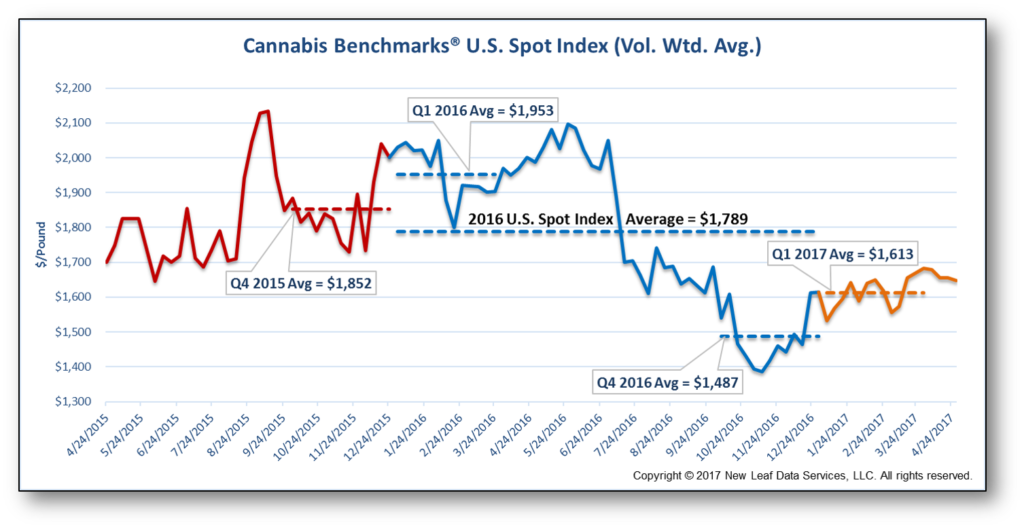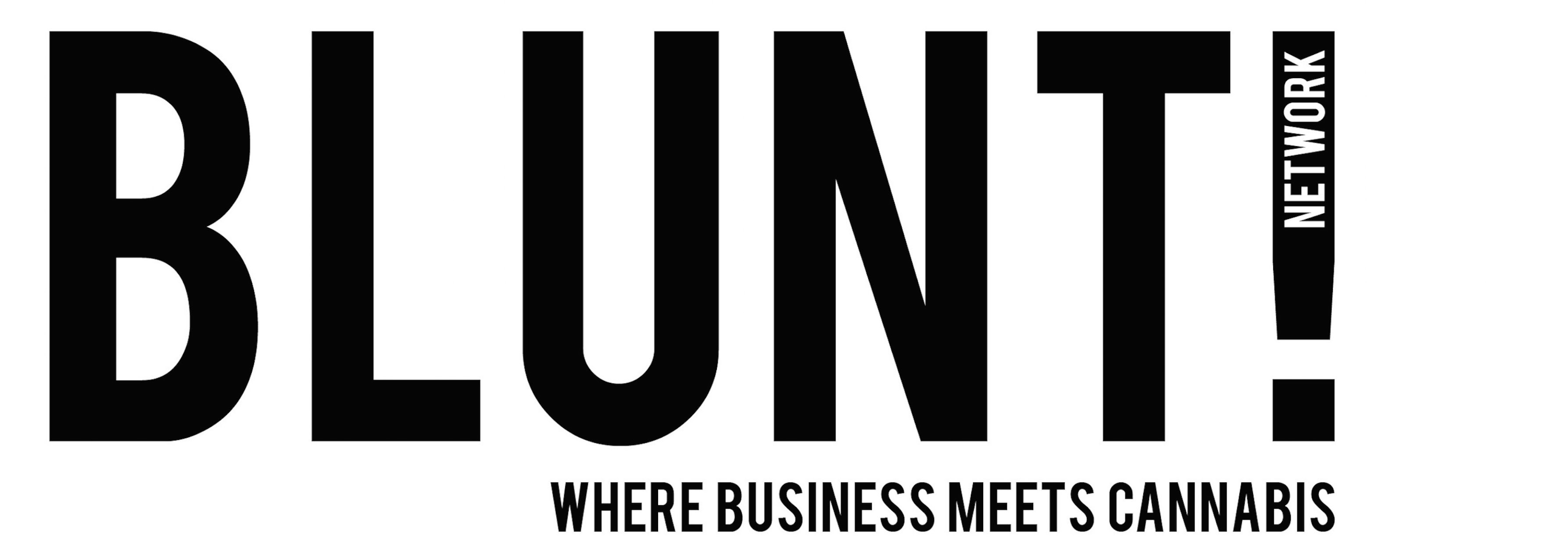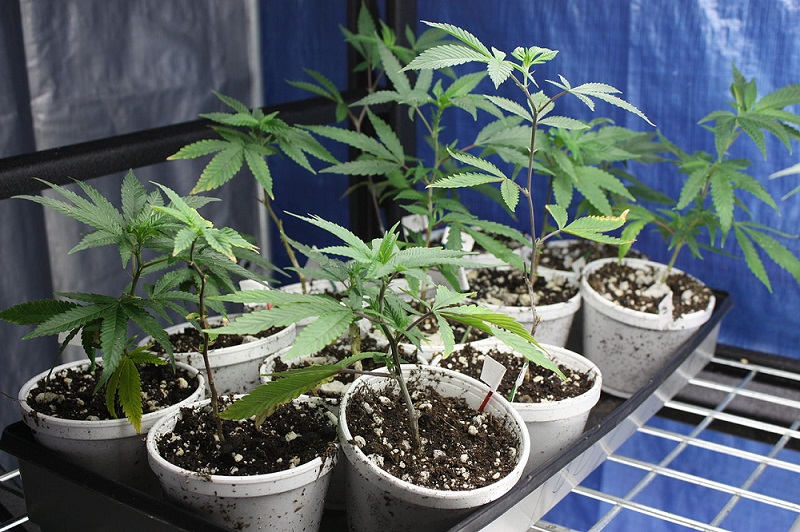Wholesale Cannabis Prices: A Look at the Past Two Years
One of the big marijuana stories of 2017, so far, has been the continuing drop in legal cannabis prices.
And while the downward trend of cannabis prices began in earnest last summer, the market has been quite volatile for some time.
Late last week Cannabis Benchmarks, an independent price reporting agency, celebrated the second anniversary of their coverage and analysis of wholesale cannabis prices. And they marked that anniversary by publishing a chart showing wholesale cannabis market dynamics over the past 104 weeks.

As the above graph shows, the firm’s U.S. Spot Index of cannabis prices peaked in September of 2015, when prices for cannabis flower reached $2,133 per pound. Prices then “declined precipitously” during that year’s autumn harvest, averaging $1,852 during the fourth quarter of 2015.
One year later, in the fourth quarter of 2016, greater supplies – along with improved cultivation techniques and better supply chain management – drove prices down by $365 per pound, to an average of $1,487.
Adam Koh, Editorial Director of Cannabis Benchmarks, says the chart tells numerous tales about cannabis prices over the past two years.
First, he tells Blunt Network,, “it shows wholesale prices trending downward overall as legalization progresses.”
 And the primary driver of this trend, he says, “is that licensed, regulated systems allow for increased and more efficient production, vastly increasing supply. Cannabis cultivation was always widespread, but previously most people would harvest relatively small crops from their basements, garages, or remote plots of land.”
And the primary driver of this trend, he says, “is that licensed, regulated systems allow for increased and more efficient production, vastly increasing supply. Cannabis cultivation was always widespread, but previously most people would harvest relatively small crops from their basements, garages, or remote plots of land.”
And as states with cannabis legalization allow for larger legitimate cultivation operations, those operations are able to produce thousands of pounds of marijuana annually, as well as maximize cannabis cultivation and production efficiency in ways that weren’t feasible during marijuana’s outlaw days.
The second point, according to Koh, is how seasonal trends in the cannabis market are evolving.
In 2015, he says, we saw the rise in prices ahead of the autumn harvest season, which was typical of the cannabis growing cycle at that point. The fall harvest brought a flood of legal cannabis to the market, which in turn would be sold off for the next several months until the following summer.
In 2016, however, “we saw more supply hit the market in the summer,” he says, “coming from the proliferation of light-deprivation greenhouse cultivation on the West Coast and Colorado.” Those light-deprivation operations, Koh notes, allow for multiple crops per season, rather than “one full-term crop in the fall.”
“In Colorado specifically, sophisticated climate-controlled greenhouses that had been under construction for the previous year or so came online and hit their stride in producing large volumes of product, grown at a lower cost than warehouse operations,” he adds. “In the fall, though, you can see that still more supply was harvested (full-term crops plus more light-deprivation harvests), pushing prices lower in the fall and winter of 2016.”
Koh believes the current political uncertainties surrounding the U.S. marijuana legalization movement are having very little effect on cannabis prices. Licensed marijuana businesses, he says, have been living with this uncertainty regarding enforcement of federal marijuana laws for several years now, “and there’s not much one can do but go about one’s business and hope for the best.”
Despite the projected downward trend of legal marijuana prices for this year and perhaps beyond, Koh is optimistic about the legal cannabis industry’s prospects.
Access by more consumers to legal marijuana in newer markets will naturally mean an increase in demand, he says, which will mean a rise in prices until cannabis producers, manufacturers and distributors in those new markets “really hit their stride and develop regular production schedules that don’t create gaps in inventory.”
In more established markets, however, Koh expects prices will head lower.
And while he believes the legal cannabis market and its revenues will continue to expand, “sometimes at quite dramatic rates,” he adds, “we view some of the projections…with a measure of caution.”




